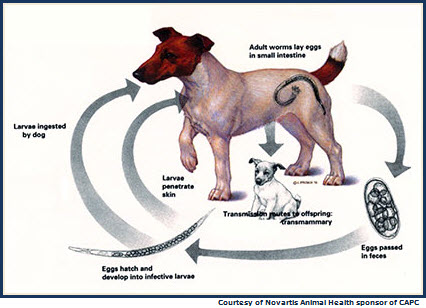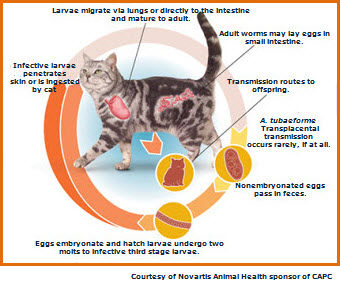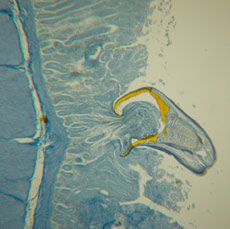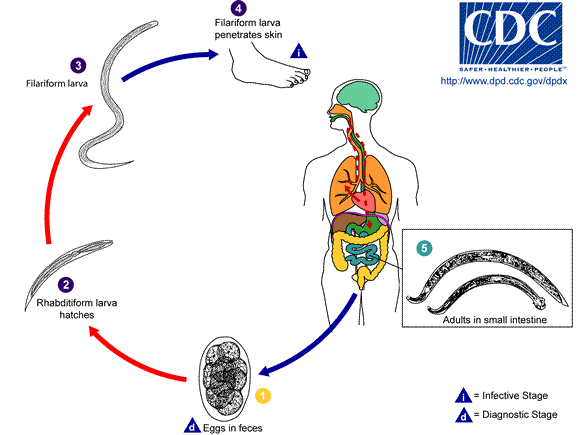|
Ancylostoma species and Uncinaria species are more common in dogs than cats. These dangerous, blood-sucking parasites live in the small intestines of infected dogs and cats and can cause severe anemia due to blood loss. Stools may appear loose and dark.
The life cycle of hookworms begins when a dog or cat ingests the infective third-stage larvae from feces or when the larva penetrates the skin. Infection can also occur when a dog ingests a vertebrate host that has infective larvae in their tissues or when a cat ingests a cockroach that contains the infective larva. Additionally, puppies can become infected by transmammary transmission. In other words, the infective larvae are passed through the bitch's milk.
If larva are ingested, they enter the intestinal tract where they mature, mate, and produce eggs. However, they may penetrate the oral cavity or the intestinal tract and are carried via the bloodstream to the lungs where they migrate to the trachea, are coughed up, then swallowed, and eventually enter the intestinal tract.
If the larva penetrates the skin, they are carried to the lungs via the bloodstream where they migrate to the trachea, are coughed up, swallowed, and enter the intestinal tract. Here, they mature, mate, and produce eggs. If they penetrate the skin, it is most commonly through the animal's feet, and there can be associated redness and itching.
 
 
All pictures are courtesy of the CAPC.
Hookworms can cause cutaneous larval migrans in humans. Cutaneous larval migrans results in abdominal pain and/or a reddened and itchy skin tunnel. Humans are infected by skin penetration.

Hookworm infection in dogs and cats is preventable and treatable. There are many products available as a monthly dewormer that can keep you and your animal companion safe from this life-threatening infection.
|








